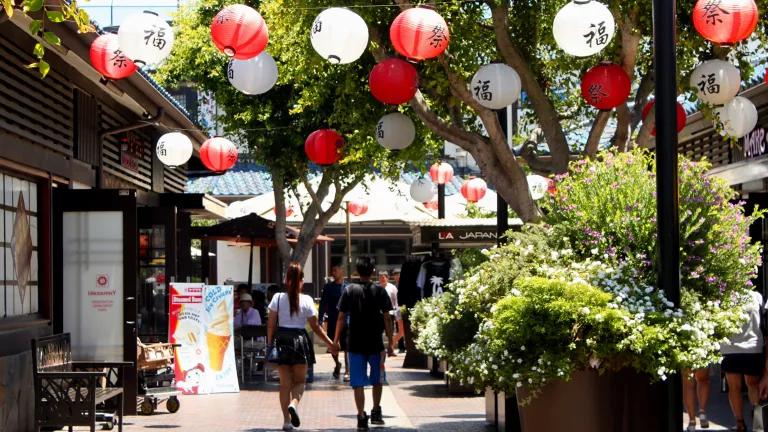Connecting Communities
Shelley Poticha, director of NRDC’s Urban Solutions program, discusses building a better future where we live.

Why is NRDC focusing on cities?
We’re not going to be able to solve problems like climate change unless we look at how cities are built and make it possible for people who live and work in urban areas to thrive while decreasing their environmental footprint. So our big goal is to protect the planet while making our cities and communities livable and affordable at the same time.
How does your work intersect with NRDC’s expertise?
We’re building on decades of experience in urban policy and the technical aspects of making cities as climate-friendly and resilient as possible. Working in close collaboration with community partners, we’re turning that expertise into a set of problem-solving strategies that take our advocacy efforts and legal work to a new level, helping accelerate change on the ground.
Why is it important to work alongside partners at the community level?
Cities are very complex places with a wide range of stakeholders. NRDC has technical expertise in a lot of areas, but there is a lot we don’t know about cities. We rely on the knowledge of people who live and work in these places. We’ve committed to allocating grants to our partners that are equal to 25 percent of our overall budget. This is to ensure that the change we’re driving is long-lasting. We want to see our partners’ capacities grow and ensure that residents are the champions and problem solvers of their own communities.
What communities have you worked with?
One example is Little Tokyo in Los Angeles. It’s under enormous development pressures, and as Southern California’s last major Japanese community, the residents were worried about losing their culture. They wanted Little Tokyo to be the emblem of sustainable revitalization.
My team has helped to facilitate discussions around building a vision and strategy that are now being taken to the mayor’s office. NRDC was able to make use of our vast networks in the region to attract smart and sustainable investment into the community. This project is now providing a model for how the City of Los Angeles can grow more sustainably.
What is your vision for our cities?
I want to see affordable multifamily buildings that are as energy-efficient as any other building in a community—that will help the poorest people in those areas to save money. I would also really like to see more cities making it possible for people to live without cars. Particularly for people who are low-income, the price of admission to the job market should not be car ownership. And I’d like to see more communities adopt strategies that support access to local, healthy food so that people can improve their well-being. With our deep technical bench, as well as the community partnerships and networks we’ve built, NRDC is well-positioned to drive these kinds of changes.
This NRDC.org story is available for online republication by news media outlets or nonprofits under these conditions: The writer(s) must be credited with a byline; you must note prominently that the story was originally published by NRDC.org and link to the original; the story cannot be edited (beyond simple things such as grammar); you can’t resell the story in any form or grant republishing rights to other outlets; you can’t republish our material wholesale or automatically—you need to select stories individually; you can’t republish the photos or graphics on our site without specific permission; you should drop us a note to let us know when you’ve used one of our stories.

Sharing the Road: Safer Streets Means Safe for Everyone
A Champion for Equitable and Sustainable Infrastructure
In Los Angeles, Renters Want Their Own Green New Deal